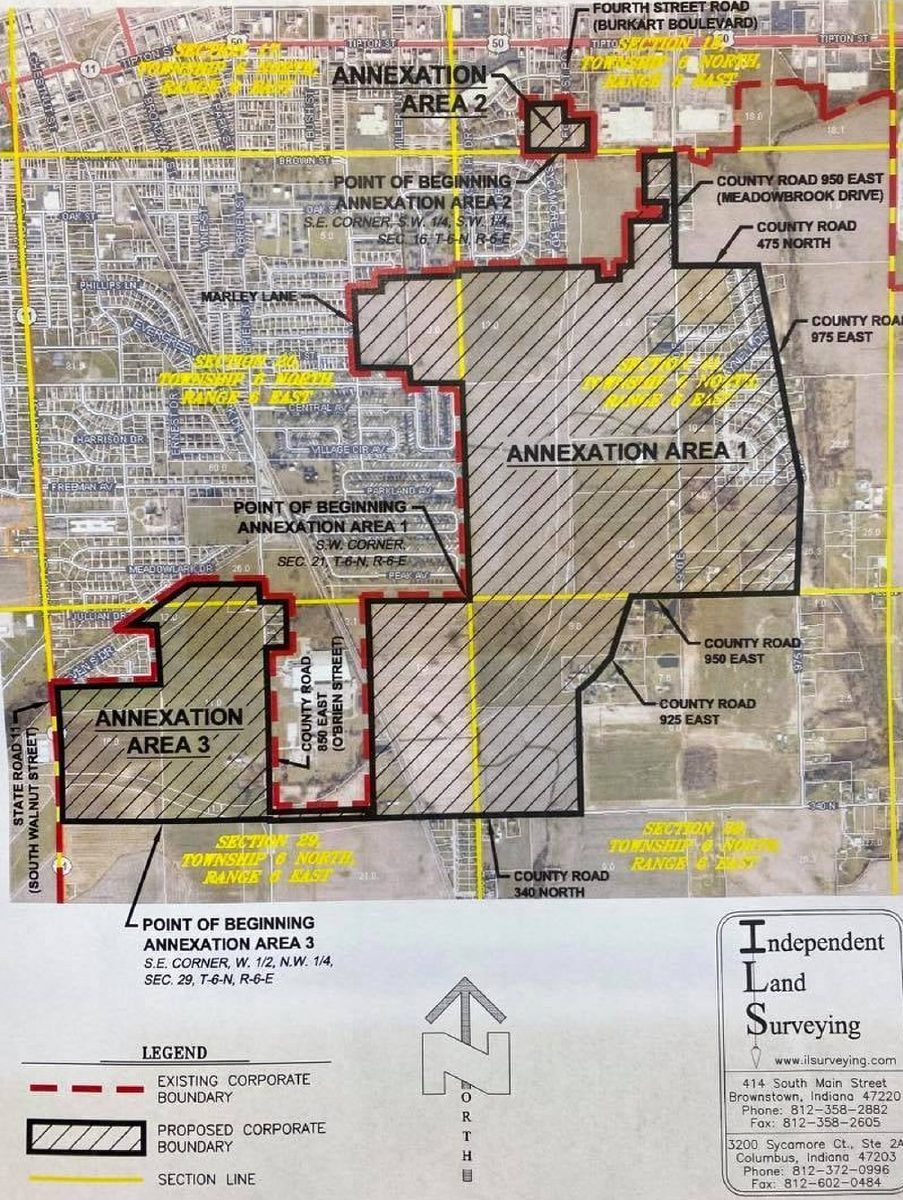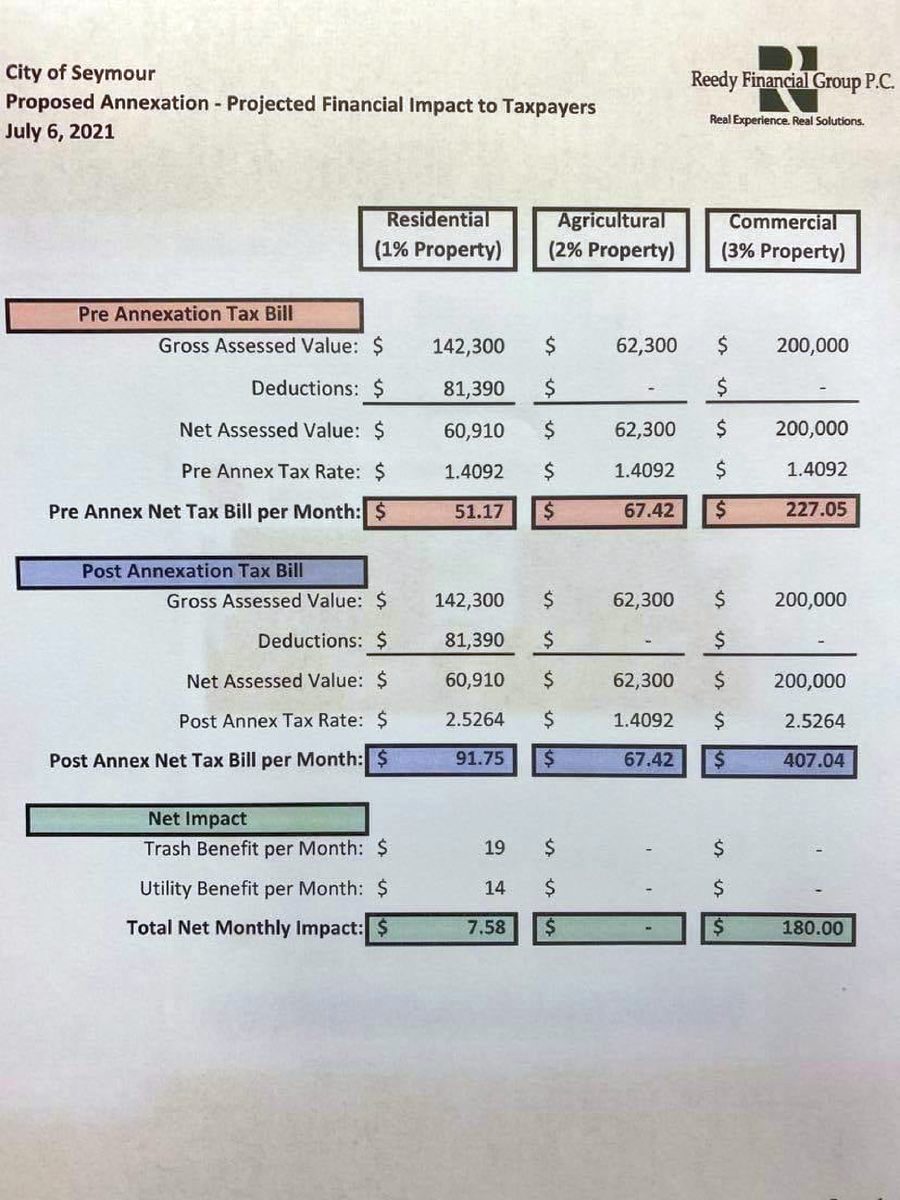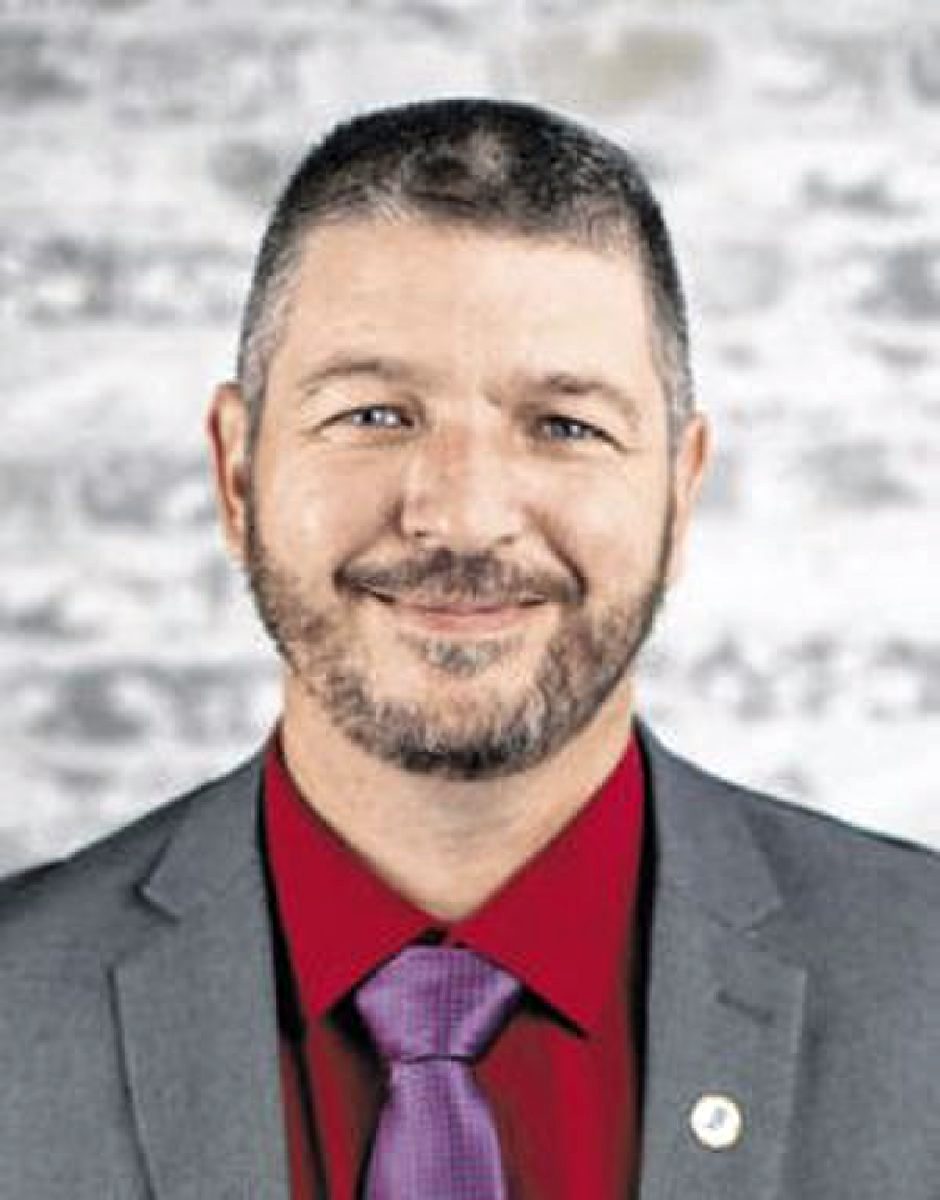

The first of six informational meetings to discuss the proposed annexation of 719 acres on Seymour’s south and southeast sides occurred Tuesday night at the Seymour Community Center.
Mayor Matt Nicholson, Jerry Hickman with Reedy Financial Group in Seymour and Lauren Box from the Indianapolis law firm Barnes and Thornburg gave presentations about the annexation process and answered questions from the public.
Nicholson went over major points about what happens to land to be annexed, which covers an area from Brown Street on the north to County Road 340N on the south and County Road 975E on the city’s east side to Walnut Street (State Road 11).
He said agricultural property does not change until an owner requests a rezone. As long as land remains agricultural property, the tax rate does not change. In cases where agricultural property is passed down to a new generation or owner, it will still be classified as agricultural until a rezone is initiated by the new owner.
Most of the land to be annexed is agricultural property, while some is residential. None of it is zoned for commercial use.

Nicholson also said if successful, the annexation would provide residents of those areas with faster police and more fire protection, affordable public transportation, cheaper trash and recycling pickup, lower sewer bills, street maintenance, snow removal and the right to vote in city elections.
Box discussed some of the legal details about annexation.
She said in 2015, the state’s annexation laws underwent some changes, including one that requires towns and cities to hold six public outreach meetings to discuss land to be annexed.
After the meetings are concluded, Box said an annexation ordinance will be introduced during a city council meeting, and the council will be asked to adopt a fiscal plan that explains what services will be extended into proposed land and how the city will pay for those services. The fiscal plan will be discussed during a council meeting.
Once the ordinance is introduced, there will be a 60-day notice for public input. Landowners within the proposed annexation zone will receive a packet of relevant information, including legal descriptions of the property to be annexed, the fiscal plans and maps.
When the 60 days is up, a public hearing will be held for landowners to provide additional feedback about the annexation.
The city will then have to decide whether or not to vote on the annexation ordinance between 30 and 60 days after the public hearing is over.
If the annexation ordinance passes and landowners still aren’t in agreement with it, there is a 90-day remonstrance period where people may file a petition with the county auditor.
As long as no remonstrance petitions are filed, the annexation would then go into effect.
Hickman said the property tax impact has been calculated for every parcel in the proposed annexation zone for the interest of landowners.
Before annexation, residential property owners would pay a net tax bill of $616.04 a year for a house with an assessed valuation of $142,300, according to a project financial impact to taxpayers report prepared by Reedy.
After, the bill would be $1,101 per year for a house with the same value.
Answering a member of the public about why annexation was happening, Nicholson said he was told years ago by a city official that communities are either moving forward or moving backward, there’s no standing still.
He said the proposed annexation zone has been developed to be a part of the city for several years, and when the city grows, it will go in the direction of areas to be zoned.
One person asked a question about how the water system would work for properties after annexation.
Nicholson said there would not be any change to how water gets to the proposed annexed properties because the only utility that the city manages is sewage.
Box said the annexation ordinance will specify how sewage systems are managed.
When asked if there are prospective businesses or industries that Nicholson has in mind to contact landowners in the proposed annexation zone, he said there aren’t any in the zone, but there are about seven different industries looking to develop in the general Seymour area.
A question was asked if it would be OK to have open burnings after properties are annexed. Seymour Firefighter Kaleb McKinney said city ordinance states citizens cannot burn if it causes a disturbance to a neighbor that calls and complains.
Box said after annexation, "rural lifestyle exemptions" can be written into the annexation ordinance to allow for purposes that normally wouldn’t be permitted in city limits.
The next five public outreach meetings about the annexation of Seymour will be 8:30 a.m. today; 1 p.m. Monday; and 6 p.m. July 14, 20 and 22. All meetings will be at the Seymour Community Center, 107 S. Chestnut St.
